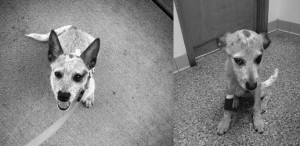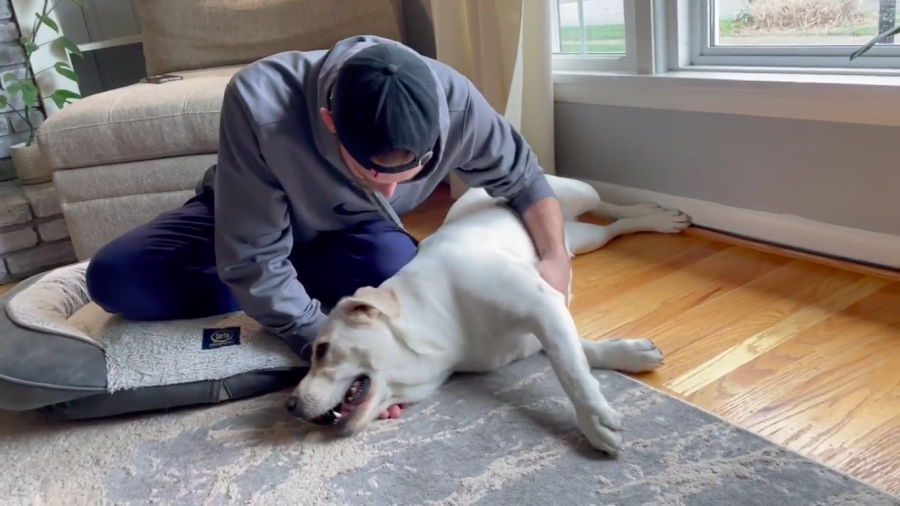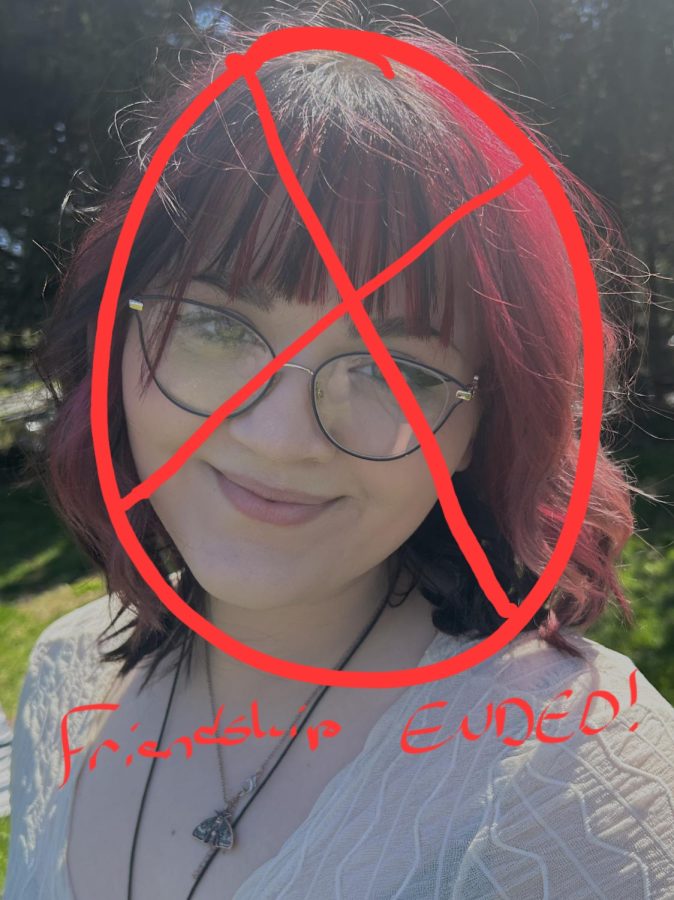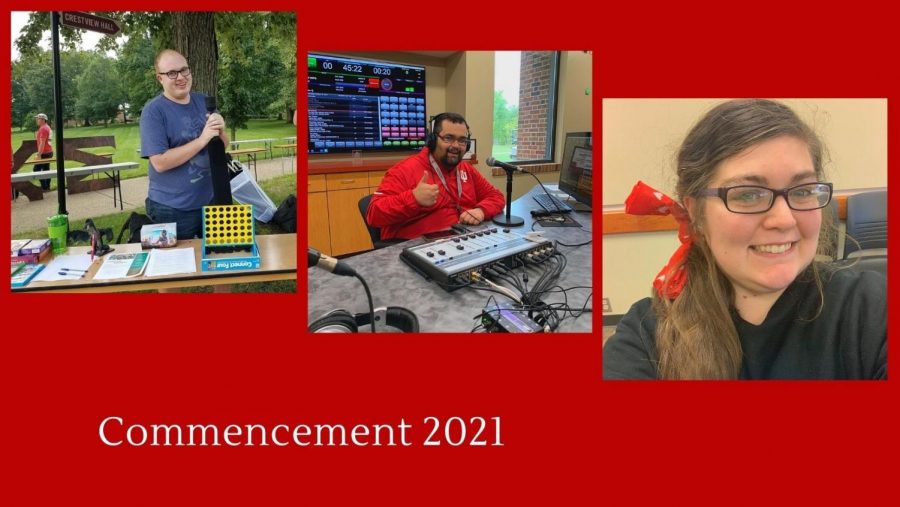I wake up to the sound of whimpering. I can hear my sister knocking on my bedroom door, saying “Gail please wake up — I need your help. Nixon is sick again.” And it’s only 6 a.m. I leap out of bed in a panic. I blindly stumble down the hall into the room where we keep our dogs in their kennels. Turning on the lights and starting to open my eyes, I find my four-month-old best friend covered in blood, feces and vomit.

Time travels by and suddenly it is 4:41 p.m. and I’m in the passenger seat of my own car flying down Interstate 65 at 70 mph, my close friend behind the wheel driving. In my hands is my 15-pound puppy Nixon.
Nixon cannot open his eyes, he cannot sit up, and he is struggling to catch his breath. While the drive to the Shively Animal Clinic may be just 10 minutes from my house, that ride felt like it is lasted a lifetime.
My friend and I hardly spoke to each other the entire trip. All I remember hearing was faintly-reassuring words from her. She told me “he’s going to be fine; he’s going to be just fine,” though with her tone, I knew she was choking back tears just as badly as I was. The entire way to the clinic, Nixon could not move — he was as limp as a rag doll. While he was streaming in and out of consciousness, he was managing to vomit and bleed all over himself.
Nixon, just one day prior, was diagnosed with parvovirus. A day before that, he could play, bark, and more importantly, hold down water. Being a new pet owner, “parvovirus” meant nothing to me. Since Nixon was from a dog shelter, I assumed this was just par for the course.
Once he was diagnosed, however, I learned quite the opposite. According to Merriam-Webster’s Collegiate Dictionary, parvovirus by definition is “marked by loss of appetite, lethargy, often bloody diarrhea and vomiting, and sometimes death.”
Death.
Around 80 percent of puppies—like my dog—that have been exposed to parvo will not make it. I read that statistic over in my head. I remember the vet telling me this statistic when I brought Nixon for his first check-up. I wish I would have picked up on the severity of his tone when he was telling me, “Make sure he’s vaccinated for this disease. Otherwise you could lose him within two months.” But I was too busy fawning over my new little guy. I mean what are the chances he could even get something awful like that? Dogs only get that disease on the rare occasion, or so I thought.
“Parvovirus is probably the most common viral illness of dogs at the present time. It is much more common in puppies than it is in adult dogs. It can be very hard to successfully vaccinate a puppy for this disease.”
I learned that the disease can be transmitted simply by interacting with a dog that already has the disease. It can also be contracted if your puppy eats the grass or digs holes in the ground where an infected dog has been. Marsha Gawarecka, a veterinarian at Shively Animal Clinic, said the virus could last on the ground or other surfaces for up to a year in all types of weather. Once contracted the disease ruins the intestinal lining within the dog, ruining the immune system.

Like anyone else would, I did not want Nixon to have parvo, but I felt it was almost unavoidable; he is teething and likes to dig. I was sitting at home holding him when I finally received the call.
“It’s parvovirus and your dog is very sick,”, the vet I first saw told me. “Next time, do not take your dog to the park before he is properly vaccinated.” Then he hung up.
He didn’t tell me anything after that. I was left with millions of questions, the most important being — will he make it to see tomorrow?
When I called later that afternoon he told me, “You’ll just have to wait it out. If you come in now I can give him an anti-nausea shot but you’ll have to stay in your car for that. I do not want your dog contaminating my clinic.” That was the end of the conversation and the last time I spoke to that vet.
I went to work later that day. Needless to say, it was hard for me to focus on anything but him. While I was waiting on my customers I managed to be polite, but my co-workers could tell I wasn’t acting my normal “Gail” self.
My friend Mike pulled me aside to ask what was wrong, and I told him about my dog and parvovirus. He just hugged me. He told me about his dog Tigger, and that when he first brought him home he also suffered from parvo. He recommended that I bring my dog to Shively Animal Clinic. “They saved my dog’s life,” he said.
With this disease being as highly contagious as it is I did not have time to just “wait it out.” I had another puppy at home by the name of Auggie, who had shown no sign of the disease, but I still did not want to chance anything.
The next day, with Nixon showing no sign of improvement, my friend and I rushed him to Shively. I ran into the clinic covered in vomit and blood from holding my dog on my lap on the way. Since the line to see one of the veterinarians was nearly out the door, one nurse pulled me aside, seeing clearly how distraught I was.
“What’s going on with your baby?” She asked me. All I could muster to say, through a muffled tone, was “parvo.” We both ran outside to get him.
I told Dr. Marsha, that the vet I was seeing previously told me I should just keep him home and wait it out. She looked at me with shock.
“You should have brought him in yesterday,” she said. Dr. Marsha scooped Nixon up in her arms and admitted him to the hospital immediately, starting him on IV fluids and providing him with 24-hour care.
While technically there is no cure or medication for parvovirus, there is treatment available. If there is one thing I could tell any new dog owner out there it is that if you even have a suspicion that your dog has parvo, take him or her to the Shively Animal Clinic or the nearest clinic around you.
Do not simply let the virus run its course. When the virus is at its worst your dog will stop eating and drinking, sending the animal in complete shock and leaving it looking lifeless, helpless and making you feel absolutely horrible.
There are some things that are out of your control and are better left in the hands of professionals.
Nixon stayed there a full week and Dr. Marsha called me every day to let me know how he was doing. I was encouraged to come visit him. When it was all said and done, the entire visit was $391. This includes all his medication, food and baths.
Nixon is still not 100 percent, but leaps and bounds better. You can’t put a price on a life, but he thanks me every chance he gets and that’s worth it to me.












